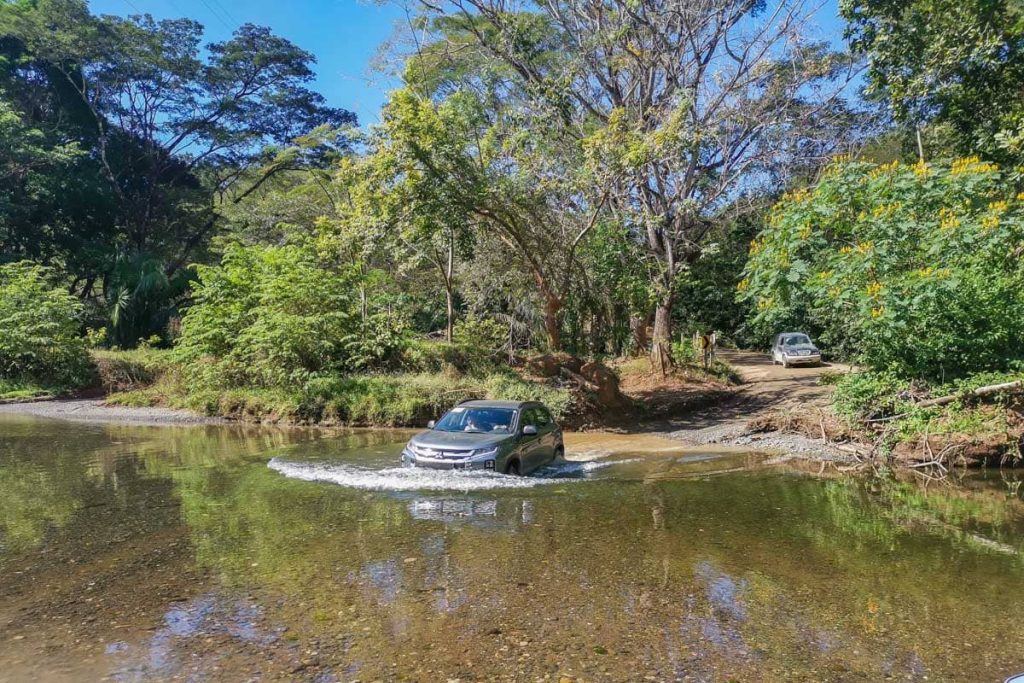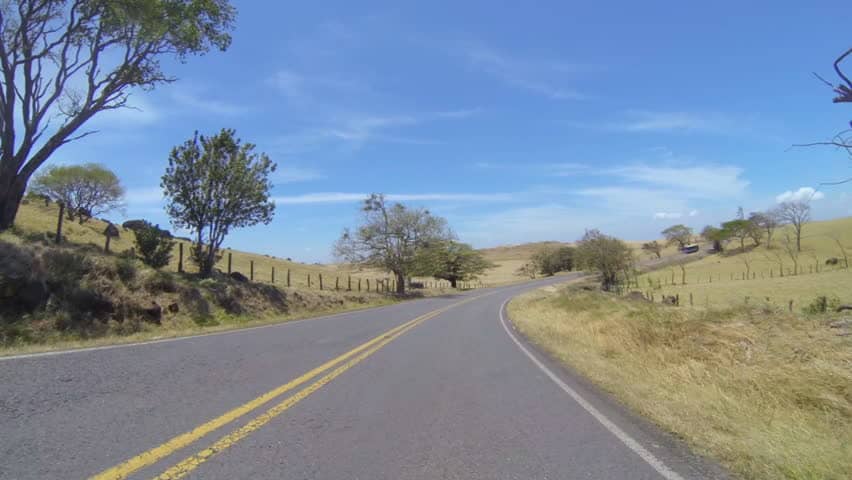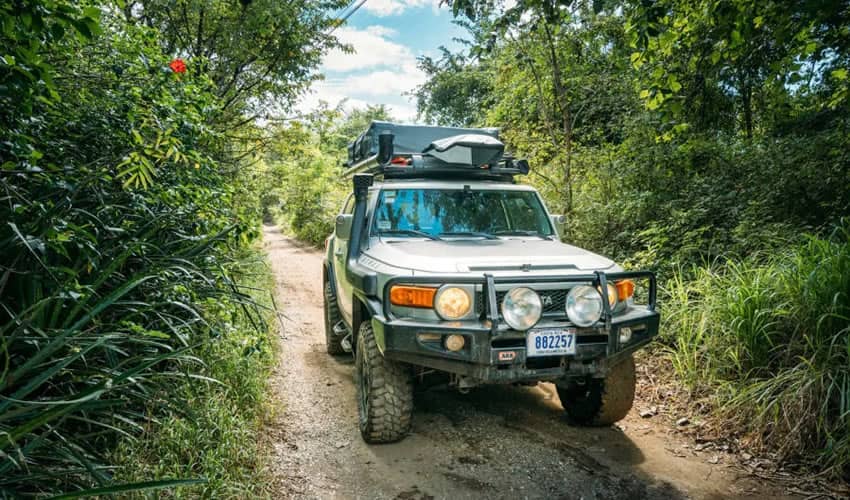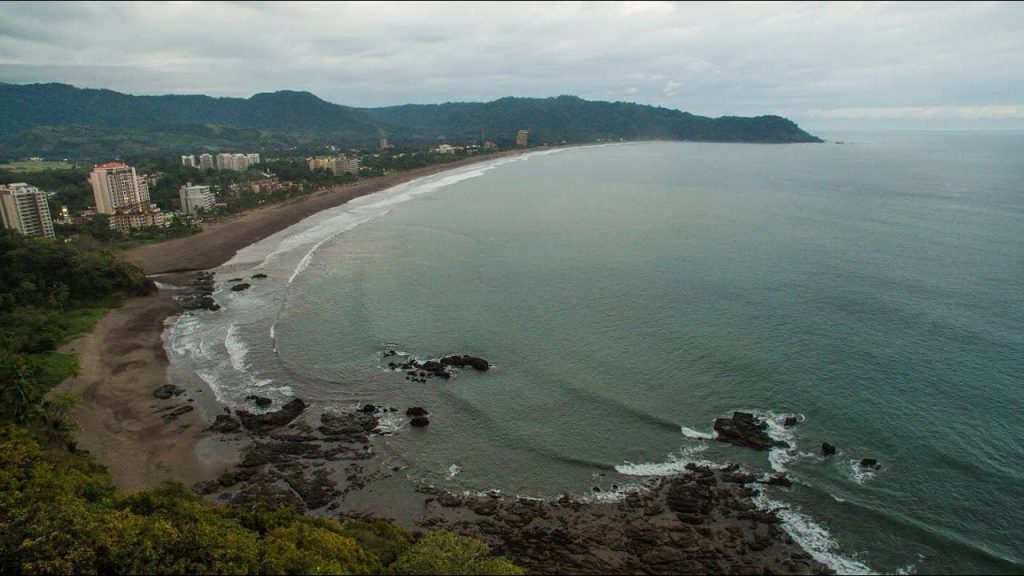Dreaming of a road trip to paradise? Driving to Costa Rica offers an unforgettable adventure through diverse cultures, stunning landscapes, and vibrant cities. Whether you’re traveling from the United States, Canada, or elsewhere in Central America, the journey to Costa Rica is more than just a drive—it’s a full-on experience.
Table of Contents
Is it safe to drive in Costa Rica?

Driving in Costa Rica is generally safe—especially for travelers who are well-prepared and alert. The country has a decent road network, and many major routes are paved. However, there are a few things to keep in mind:
Road Conditions Vary: While highways are usually in good shape, rural and mountain roads can be narrow, steep, or full of potholes. A 4×4 vehicle is recommended if you plan to explore off-the-beaten-path areas.
Driving Culture: Local drivers can be unpredictable. Watch for sudden stops, passing on curves, and motorcycles weaving through traffic.
Weather Hazards: Heavy rain during the rainy season (May–November) can lead to flooding and landslides, especially in remote areas.
Night Driving: It’s best to avoid driving at night due to poor lighting and limited road signs, especially in rural zones.
Navigation: GPS apps like Waze or Google Maps work well, but cell service can be spotty in some areas.
Is it easy to drive in Costa Rica?
Driving in Costa Rica is manageable for most visitors, especially if you’re comfortable with basic road navigation and stay alert. In popular areas like San José, Liberia, and well-traveled tourist destinations, roads are generally paved and easy to follow with GPS apps like Google Maps or Waze.
However, there are a few challenges to be aware of:
- Rural roads can be narrow, bumpy, or unpaved—especially during the rainy season.
- Signage is sometimes limited or only in Spanish.
- Local driving habits may feel aggressive to visitors, with unexpected passing or limited use of signals.
- Night driving is not recommended due to poor lighting and possible road hazards like potholes or animals.
If you’re confident and cautious, driving in Costa Rica is a great way to explore the country’s natural beauty and hidden gems. Renting a 4×4 is a smart choice if you plan to visit off-the-beaten-path locations.
Required Documents Driving to Costa Rica

Driving to Costa Rica involves crossing multiple international borders, so having the correct documents is absolutely essential. Here’s what you’ll need:
1. Valid Passport
Your passport must be valid for at least 6 months from your date of entry into Costa Rica. You’ll need it at every border crossing.
2. Driver’s License
A valid driver’s license from your home country is accepted in Costa Rica. It’s recommended to also carry an International Driving Permit (IDP), especially for travel through other Central American countries.
3. Vehicle Registration
Carry the original vehicle registration (or a notarized copy) to prove ownership. If you’re driving a leased or financed car, you may need written permission from the lender.
4. Temporary Vehicle Import Permits (TIP)
Each country you pass through—including Costa Rica—requires a temporary import permit for your vehicle. These are typically issued at border crossings and may involve fees and paperwork.
5. Proof of Insurance
You’ll need international car insurance that covers all countries on your route. Once in Costa Rica, you’ll also need to purchase local vehicle liability insurance at the border.
6. Tourist Visa (if required)
Depending on your nationality, you may need a visa to enter one or more countries en route to Costa Rica. U.S., Canadian, and EU citizens typically don’t need a visa for Costa Rica itself for stays under 90 days.
7. COVID-19 or Health-Related Documents (if applicable)
Depending on current health regulations, some countries may require vaccination records or entry forms. Always check the latest updates before departure.
Having all these documents ready and organized can save you time, stress, and delays at each border. Consider keeping both physical copies and digital backups.
Road Conditions and Driving Culture

Road Conditions
- Highways and main roads are generally in good condition, especially those connecting major cities and tourist destinations.
- Rural and remote areas often have dirt or gravel roads, which may be bumpy, steep, or muddy—especially during the rainy season (May to November).
- Potholes are common, even on paved roads, so drive slowly and stay alert.
- Bridges in rural areas can be narrow or even one-lane, requiring caution when crossing.
Driving Culture
- Local drivers can be aggressive or unpredictable—expect sudden stops, passing on curves, and motorcycles weaving through traffic.
- Traffic signs are in Spanish, and GPS is a must for navigation.
- Speed limits vary depending on the area but are generally posted in kilometers per hour (km/h). Speeding tickets are common, especially in tourist zones.
- Use of turn signals is rare, so anticipate driver actions ahead of time.
Despite these quirks, many visitors find driving in Costa Rica to be part of the adventure. With patience and awareness, you can safely navigate the country’s diverse landscapes and hidden gems.
Renting a Car in Costa Rica

Renting a car in Costa Rica can provide you with the freedom to explore the country at your own pace, but it’s important to know what to expect before you hit the road. Here’s a guide to help you navigate the car rental process in Costa Rica:
Choosing the Right Rental Car
4×4 vs. Sedan: If you plan to explore rural areas, beaches, or national parks with unpaved roads, renting a 4×4 is highly recommended. For city travel or paved roads, a sedan may suffice.
- Size and Comfort: Consider the number of passengers and luggage you’ll have, especially if traveling long distances or with family. Opt for a vehicle that offers enough space for everyone.
Rental Agencies and Pricing
- International vs. Local Rental Agencies: Costa Rica has a mix of international companies like Hertz, Avis, and Budget, as well as local agencies that may offer competitive rates.
- Rental Costs: Rates typically range from $30–$70 per day for an economy car and can go higher for SUVs or luxury vehicles. Prices can vary depending on the season (high season is December–April).
- Insurance Costs: Car rental agencies often include basic liability insurance in the price. However, collision damage waiver (CDW) and theft insurance are additional and highly recommended, especially for peace of mind on rugged roads.
Insurance Requirements
- Basic Coverage: By law, rental companies in Costa Rica must include basic insurance, which covers third-party liability. However, this insurance usually does not cover your own vehicle’s damages.
- Collision Damage Waiver (CDW): This optional insurance covers damages to your rental car, and it’s highly recommended, especially if you’re planning to drive on rough roads.
- Theft Protection Insurance: In case of theft, this insurance will protect you from losing your rental car.
- Credit Card Insurance: Many credit cards offer rental car insurance for international rentals, so check with your credit card provider beforehand.
Driving License and Age Requirements
- Driver’s License: You can use your home country driver’s license for up to 90 days in Costa Rica. An International Driving Permit (IDP) is not mandatory but recommended, especially if your license is not in English or Spanish.
- Age Requirements: Renters must typically be 21 years or older, though some agencies may require drivers to be 25 or older. Drivers under 25 may face additional fees (young driver surcharge).
Driving to Costa Rica: Important Tips
- Road Conditions: As mentioned earlier, roads in Costa Rica vary greatly. While main highways are generally well-maintained, many rural roads can be narrow, winding, and unpaved.
- Speed Limits: Speed limits are in kilometers per hour (km/h), with typical limits being 60-80 km/h on highways and 40 km/h in urban areas. Always watch for speed limit signs.
- Insurance and Gas: Fill up on fuel before leaving big cities, as gas stations can be sparse in rural areas. Also, note that fuel prices tend to be higher in Costa Rica compared to other countries.
- Parking: In cities like San José, parking can be difficult to find and sometimes expensive. Always ensure you’re parked legally to avoid fines.
Returning the Car
- Inspection: Make sure to inspect the car for any damage before returning it. Take pictures of the car when you pick it up and drop it off for documentation purposes.
- Fuel Policy: Most rental companies require that you return the car with the same amount of fuel as when you picked it up. Otherwise, you may be charged a refueling fee.
Alternatives to Renting a Car
- If you’re only staying in one area or prefer not to drive, consider alternatives like shuttle services, public buses, or local tours for easy access to popular attractions.
Conclusion

- Driving to Costa Rica is an incredible adventure that allows you to experience the diverse landscapes, rich culture, and vibrant cities at your own pace. From the scenic roads of Central America to the lush rainforests and stunning beaches of Costa Rica, this journey is sure to be a memorable one.

Owen Samuel is a Destination Manager based in California, known for his expertise in creating unforgettable travel experiences. With a deep passion for tourism and local culture, he helps travelers discover the best places around the world.









